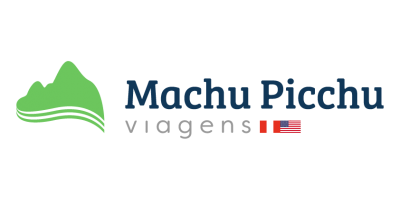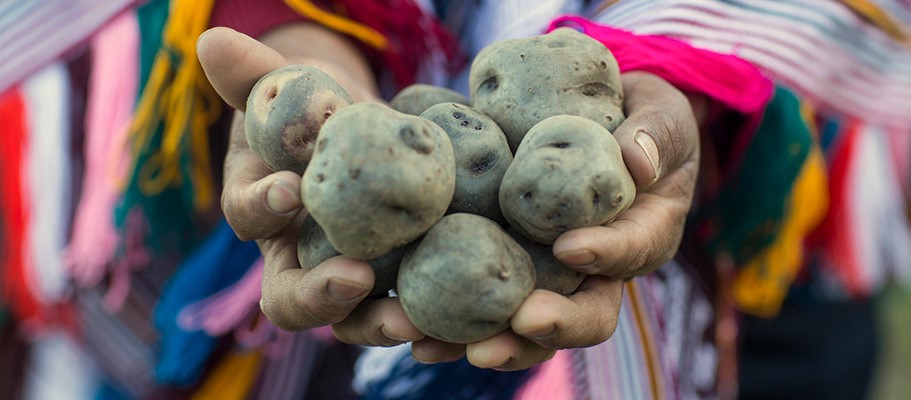The versatile and practical potato contributed greatly to Peruvian cuisine’s great diversity. With their vibrant colors, unique shapes, and wonderful flavors, potatoes bring joy to our taste buds. But did you realize that this global staple originates in Peru? Our country is home to over 2,000 different potato varieties.
Potatoes also tell a beautiful story of the people who have cared for them for thousands of years. The connection between Peru and potatoes dates back thousands of years. Join us as we look at the history and significance of the potato, not just in Peruvian cuisine but also in the world’s food security.
Origin
The story of this tuber dates back over 10,000 years. According to some studies, it was first cultivated between 8000 and 5000 B.C. in the Puno region. Later, our ancestors in Peru, long before understood its full potential, recognized the potato as a true gift from nature.

They valued its energy boost, and thanks to its properties, the Inca culture also cherished the potato as a key part of their diet. Incas used it thanks to its many varieties, its nutritional benefits, and used it in many delicious dishes. Now, we know that potatoes are rich in vitamin C, iron, and folic acid (B9).
It also contains antioxidants and other essential nutrients that are vital for our health. Since then, this tasty tuber has thrived in the southern Peruvian Andes. Nowadays, scientists discovered that potatoes are not just a tasty meal, they can help with health issues like anemia, arthritis, high blood pressure, etc.
Journey to another continent
When the Spanish landed in Peru in 1532, several crops crossed the Atlantic in an event known as the “Columbian Exchange.” The potato was one of them. Some colonizers saw it as an exotic food and thought it had special qualities.
As the environment in Spain was very different from the Peruvian Andes, it took quite a while for the potato to thrive in Europe. However, in 1580, it arrived in Northern Ireland, where it found a more suitable environment to flourish.
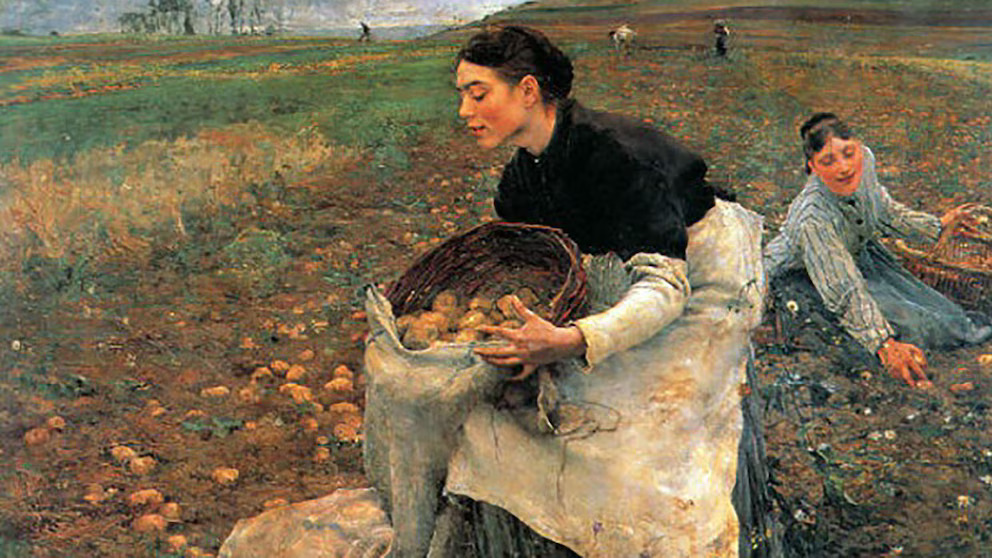
Farmers quickly saw that cultivating potatoes cost less, was easy to preserve, and generated more food. From Ireland, it spread to the British Isles and then moved east and north across Europe. Over time, the potato became an important part of European and global diets.
In his book “The Wealth of Nations,” author Adam Smith wrote, “The food produced by a potato field is far superior to that produced by a wheat field.” He continued, “No food can pass a more decisive test of its nutritional quality, nor can it be more suitable for human health.”
Cultivation and Economy
The top potato-producing regions include Puno, Cusco, and Huánuco. Potatoes feed our people and create over 25 million workdays each year, supporting many families. Potatoes grow well from 200 meters above sea level, while our native potatoes thrive above 3,000 meters.
Peru leads Andean tuber production in South America and the whole of Latin America, with last year’s output reaching 5.4 million tons. Peru is home to about 3,000 unique potato varieties, each with different shapes, flavors, colors, and textures.
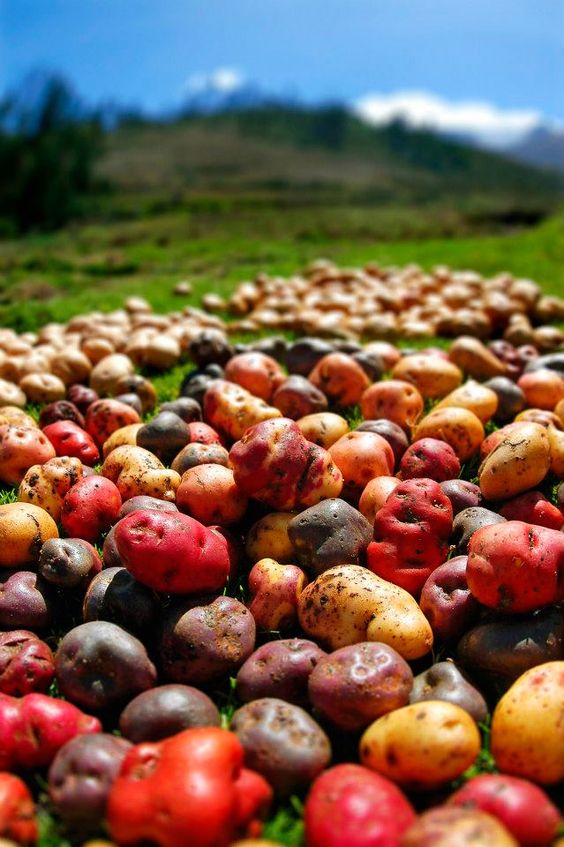
Thanks to our incredible biodiversity, potatoes can thrive in challenging climates, feeding our country and boosting global food security. Peru exports about ten potato varieties, almost all of them are frozen, pre-cooked yellow ones, plus our native types.
Peru also sends value-added products, like colored chips, to Europe and vodka made from two native varieties. What’s remarkable about potato cultivation in Peru is its ability to thrive from sea level to 4,200 meters above sea level, so we have around 3,300 to 3,400 varieties out of the 3,800 found globally. This genetic diversity helps our potatoes adapt to tough, high altitudes.
Potato’s importance in Peru
We have to highlight that Peruvian native varieties have a dry matter content ranging from 23% to 36%. This is quite impressive compared to the 18% to 20% found in European and North American varieties. On the other hand, the way to assess potato quality is by looking at the color of the skin and flesh, as dark-skinned and dark-fleshed tubers were once overlooked.
Now, they are gaining appreciation, especially among highland producers. These dark-fleshed tubers—like purple, red, and blue varieties—are not only beautiful but also full of nutrients. They have a higher protein value than wheat, oats, and many vegetables. They also have a lot of vitamin C, carotenoids, and anthocyanins.
Potatoes are more than just a food source; they are a big part of our culture and showcase the agricultural wealth of Peru. Peruvian potatoes have unique genetics and many cooking methods.
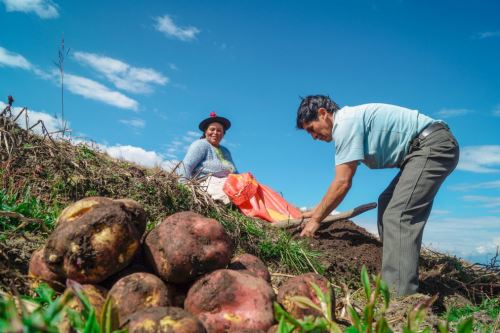
Potatoes are vital to our local economies too. Working together to support the growth and preservation of our native potato varieties will help to ensure future food, protect biodiversity, and celebrate Peruvian culture. Potatoes not only nourish our bodies but also lift the spirits of Peruvians.
In Peru, potatoes thrive in the snowy Andes and lush coastal areas, with highland villages supplying 95% of our national needs. Our “native or colored potatoes” are a special gift that Peru shares with the world, promoting food security.
Miguel Quevedo, a potato expert, highlights its economic importance. It contributes 8.314 billion soles to our economy, making up 10.5% of our total agricultural production. Let’s keep celebrating and supporting this vital crop together!
The Potato Day
We are excited to celebrate our rich heritage on a global stage! This year’s May 30 was the first International Potato Day, thanks to a UN General Assembly declaration. The Peruvian government’s official webpage stated that Peru first established National Potato Day through a resolution.
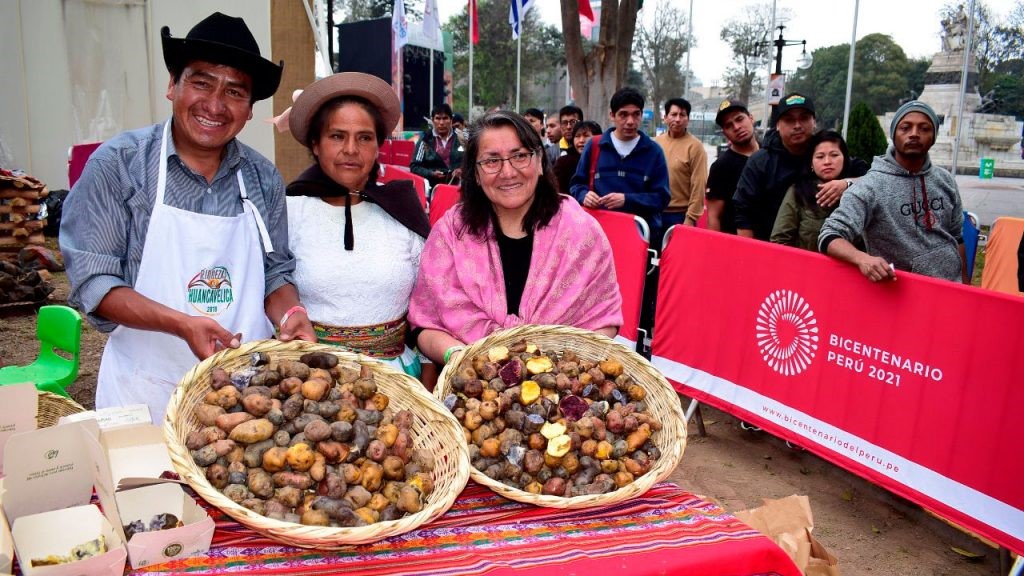
In 2022, the FAO (A UN-specialized agency that fights hunger and promotes nutritious food) was invited to create International Potato Day to highlight the importance of this amazing tuber around the world. This achievement not only honors Peru but also shines a light on our small producers.
Our ancestors have lovingly preserved and shared this vital food with everyone, so this recognition is a celebration of Peru and a heartfelt tribute to the small producers. They have passed down one of our most cherished foods—right alongside rice, corn, and wheat—through many generations.
Now that you learned the importance of Peruvian potatoes, you have more reasons to know more about Peru! For your trip to Peru, Viagens Machu Picchu will be more than glad to assist you. We operate around all destinations in Peru, and more than 100,000 can confirm our service is the best. Contact us to start taking the first step into the trip of your dreams, Peru is waiting for you.
Viagens Machu Picchu, journeys that inspire, moments that last.
